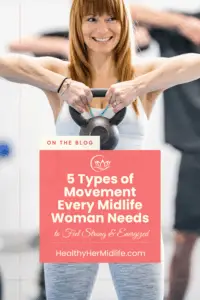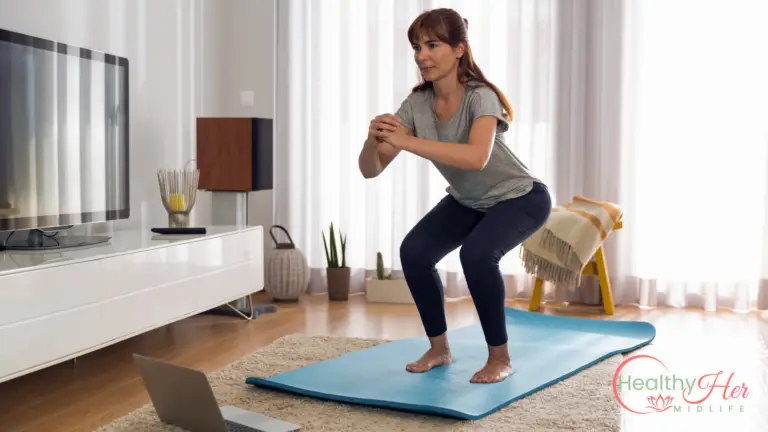Your Menopause Exercise Plan
The Midlife Movement Plan: How to Stay Strong, Flexible, and Energized — Without Burning Out
If you’re over 40 and feeling more tired than toned after your workouts (or just avoiding them altogether), you’re not alone. What worked in our 20s doesn’t always serve us in our 40s, 50s, and beyond. And yet, regular movement is one of the most powerful tools we have to boost energy, manage weight, reduce brain fog, and support mood and hormones But it’s not about doing more. A good menopause exercise plan is about doing the right kinds of movement — the ones that work with your body, not against it.
Let’s break it down.

Why Movement Needs to Shift After 40
As estrogen, progesterone, and other hormone levels decline in midlife, we experience:
- Muscle loss (sarcopenia)
- Reduced bone density
- Increased inflammation
- Higher cortisol (stress hormone) levels
- Slower recovery times
Research from the North American Menopause Society shows that regular physical activity improves menopausal symptoms, including sleep quality, mood, energy, and joint pain. But the movement must be sustainable — and supportive.
The 5 Types of Movement Midlife Women Need in Their Menopause Exercise Plan
Consider these movements when putting together your menopause exercise plan. Incorporating these five forms of movement can help protect your energy and elevate your results:
1. Gentle Cardio (3–5x per week)
Walking, cycling, swimming, and dancing — low to moderate intensity — improve cardiovascular health without overtaxing the nervous system.
Tip: Walking for 20–30 minutes after dinner is linked to better blood sugar regulation.
2. Strength Training (2x per week)
Helps combat age-related muscle loss, supports metabolism, and improves insulin sensitivity.
According to the National Institutes of Health, strength training in older adults improves mobility, balance, and functional independence.
3. Mobility & Flexibility Work (daily or a few times per week)
Yoga, foam rolling, dynamic stretching, and joint mobility drills help reduce injury risk and improve posture.
Try: This gentle, short yoga flow paired with breathwork
4. Balance & Core Stability (3x per week)
Often overlooked, but critical for injury prevention and healthy aging. Think single-leg moves, planks, or simple balance holds.
5. Restorative Movement (1–2x per week or more)
Stretching, yoga nidra, breathwork, or even slow dancing — these support nervous system regulation and reduce cortisol. The better we manage stress, the better our body responds to other movement.
What You Eat After Movement Matters
Movement and nutrition go hand-in-hand, especially in midlife when recovery is everything.
Skipping meals or reaching for processed carbs can undo your efforts. Instead, focus on:
- Protein (20–30g per meal)
- Fiber (for blood sugar balance)
- Anti-inflammatory fats (like flax, walnuts, avocado)
Need ideas?
Check out these plant-powered breakfasts to refuel and feel amazing:
Post-Exercise Boosters



Or view all midlife-friendly breakfast recipes here
Easy Ways to Start with a Menopause Exercise Plan
Even small shifts can build momentum. Here are a few simple ways to begin integrating these movement types:
- Take a 15-minute walk after meals
- Add 10 bodyweight squats and wall push-ups to your morning routine
- Stretch while watching TV
- Do 2 yoga poses before bed
- Try 1 new strength move (like lunges or bicep curls) each week
If you want help creating a realistic movement + nutrition plan that works for your life and your body, let’s talk.
Ready to Move Better, Feel Better, and Live Stronger?
✨ I offer private coaching for midlife women ready to stop feeling stuck and start feeling strong — in body and mind.
👉 Book your free 20-minute wellness call here — let’s talk about what feeling better looks like for you.
Still Hot Flashing, Exhausted, Gaining Weight or Frustrated With Midlife Changes?
In my 90-Day Midlife Reset, I help midlife women reduce bloating, sleep better, and feel like themselves again—without food rules, overwhelm, or shame.









